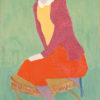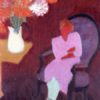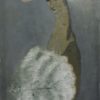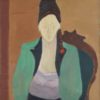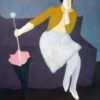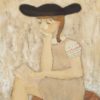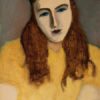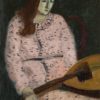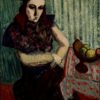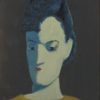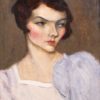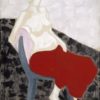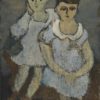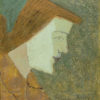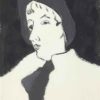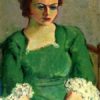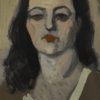Milton Avery (1885-1965)
Milton Clark Avery was an American modern painter. Born in Altmar, New York, he moved to Connecticut in 1898 and later to New York City. The son of a tanner, Avery began working at a local factory at the age of 16 and supported himself for decades with a succession of blue-collar jobs. His interest in art led him to attend classes at the Connecticut League of Art Students in Hartford, and over a period of years, he painted in obscurity while receiving a conservative art education.
In 1917, he began working night jobs in order to paint in the daytime. In 1924, he met Sally Michel, a young art student, and in 1926, they married. Her income as an illustrator enabled him to devote himself more fully to painting. The two had a daughter, March Avery, in 1932.
For several years in the late 1920s through the late 1930s, Avery practiced painting and drawing at the Art Students League of New York. Roy Neuberger saw his work and thought he deserved recognition. Determined to get the world to know and respect Avery’s work, Neuberger bought over 100 of his paintings, starting with Gaspé Landscape, and lent or donated them to museums all over the world. With the work of Milton Avery rotating through high-profile museums, he came to be a highly respected and successful painter.
In the 1930s, he was befriended by Adolph Gottlieb and Mark Rothko among many other artists living in New York City in the 1930s–40s. The Phillips Collection in Washington, D.C., was the first museum to purchase one of Avery’s paintings in 1929; that museum also gave him his first solo museum exhibition in 1944. He was elected a Fellow of the American Academy of Arts and Sciences in 1963.
Avery was a man of few words. “Why talk when you can paint?” he often quipped to his wife. Avery’s work is seminal to American abstract painting—while his work is clearly representational, it focuses on color relations and is not concerned with creating the illusion of depth as most conventional Western painting since the Renaissance has.
Avery was often thought of as an American Matisse, especially because of his colorful and innovative landscape paintings. His poetic, bold and creative use of drawing and color set him apart from more conventional painting of his era.
Early in his career, his work was considered too radical for being too abstract; when Abstract Expressionism became dominant his work was overlooked, as being too representational. French Fauvism and German Expressionism influenced the style of Avery’s early work, and his paintings from the 1930s are similar to those of Ernst Ludwig Kirchner. By the 1940s, Avery’s painting style had become more similar to Henri Matisse, and his later works use color with great subtlety.
